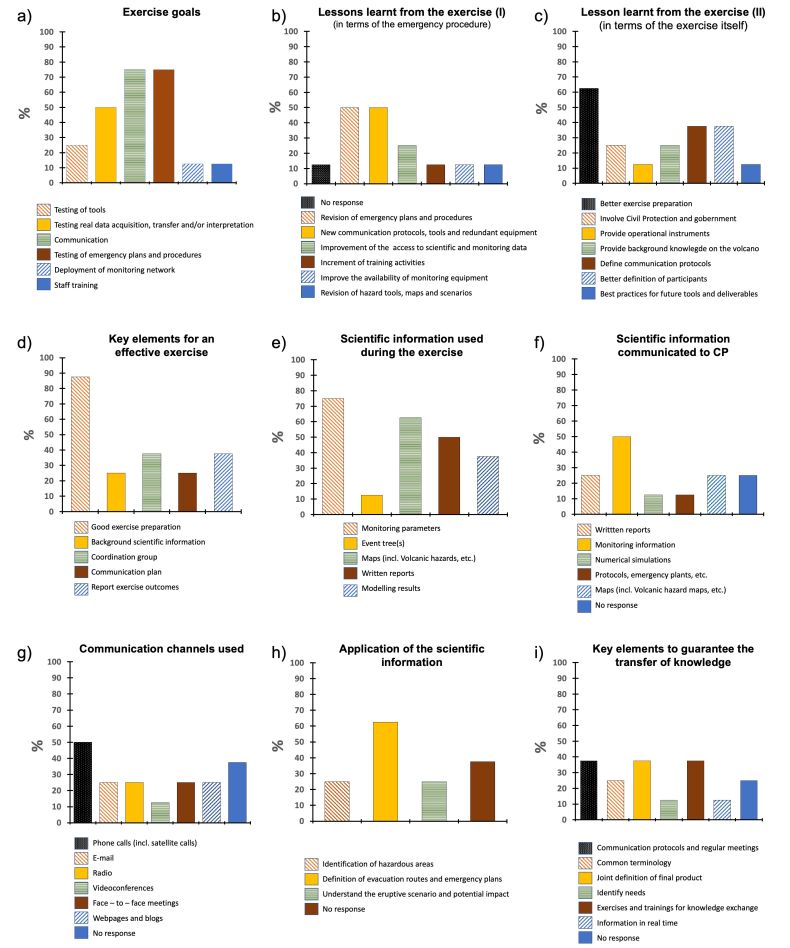Surveying volcanic crises exercises: From open-question questionnaires to a prototype checklist
- Massaro S., Sandri L., Geyer A., Cristiani C., Nave R., Barsotti S., Loughlin S., Puglisi G.
Journal of Volcanology and Geothermal Research, Volume 440, August 2023, 107850
Abstract
- Volcanic crisis exercises are usually run to test response capabilities, communication protocols, and decision-making procedures by agencies with responsibilities to cope with scenarios of volcanic unrest with inherent uncertainty, such as volcano observatories and/or civil protection authorities. During the last decades, the use of questionnaires has been increased to evaluate people's knowledge on volcanic hazards and their perception of risk, to better understand their preparedness to respond to emergency measures plans.
In this paper, we present a study carried out within the European Network of Observatories and Research Infrastructures for Volcanology project (EUROVOLC) focused on extracting information on the experience gained during volcanic-crisis exercises by the project's participants and beyond. An open-ended question questionnaire was firstly distributed for a survey within the project community. Through the results obtained, we developed a user-friendly online multi-choice questionnaire that was submitted to the volcanological communities within and outside EUROVOLC. Analyzing the answers to the online questionnaire, we extracted a prototype checklist for guiding the design of such exercises in the future. Our results confirm this type of survey as a very useful tool for gathering information on participants' experience and knowledge, able to understand which data and information may be useful when designing exercises for scientists, emergency managers and decision makers. In particular, the main lessons learnt regard the need i) to increase training activities involving people exposed to volcanic hazards and media, ii) to improve external communication tools (between players and public/media), equipment and protocols and iii) to better define decision-makers' needs.
Silvia Massaro
PubAIV-ID-00117 - Articolo in Rivista (Non-Open Access)

